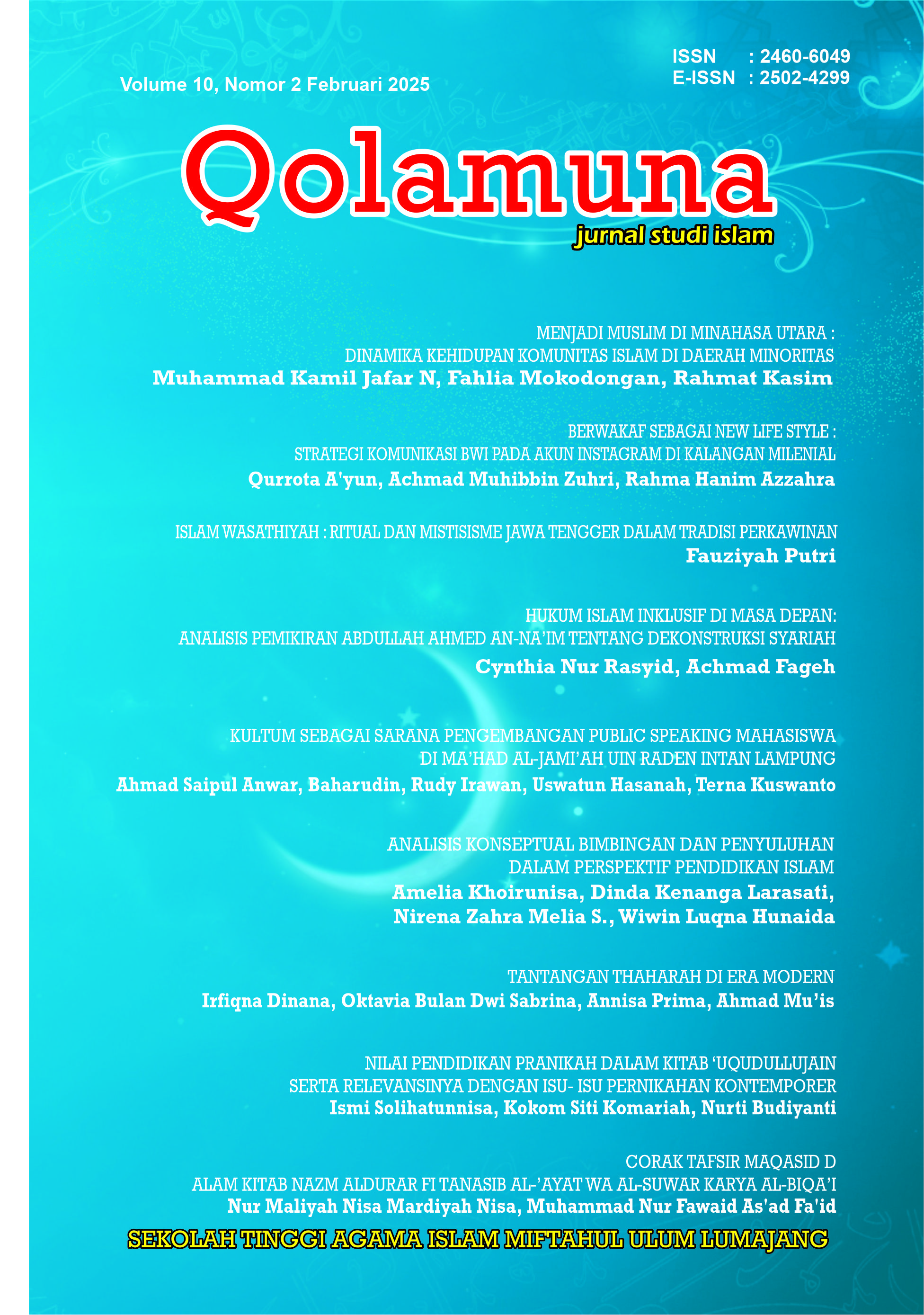MENJADI MUSLIM DI MINAHASA UTARA : DINAMIKA KEHIDUPAN KOMUNITAS ISLAM DI DAERAH MINORITAS.
DOI:
https://doi.org/10.55120/qolamuna.v10i02.2043Abstract
This research aims to analyze the dynamics of the Islamic community in North Minahasa, particularly in building and maintaining identity in a multicultural society. Using a qualitative approach and the social construction theory of Peter L. Berger and Thomas Luckmann, this study explores the process of externalization, objectivation, and internalization in the formation of Islamic identity. The focus of the study lies in the interaction between Islamic values and local Minahasa culture, such as mapalus and masawang, as well as the harmonious relationship between Muslims and Christians as the majority.
The results of the study show that the Muslim community in North Minahasa has succeeded in maintaining their identity through the integration of religious values with local culture without losing the essence of Islamic teachings. The mosque becomes the main center in the process of objectification of Islamic values, while interfaith social interaction encourages the creation of mutually respectful relationships. On the other hand, the internalization of religious values in the daily lives of Muslims strengthens community solidarity and their religious identity.
The conclusion of this study is that Islamic identity in North Minahasa is not only formed by religious doctrine, but also through adaptation to local social and cultural contexts. This process reflects harmony and tolerance in the life of a multicultural society. This study provides important insights for the study of religious identity in minority communities, as well as encouraging the strengthening of interfaith harmony in Indonesia.
Keywords: Muslim, Mapalus, Minority.
Downloads
Published
Issue
Section
License

Jurnal Studi Islam by Qolamuna is licensed under a Creative Commons Attribution 4.0 International License.
Based on a work at http://ejournal.stismu.ac.id/ojs/index.php/qolamuna







